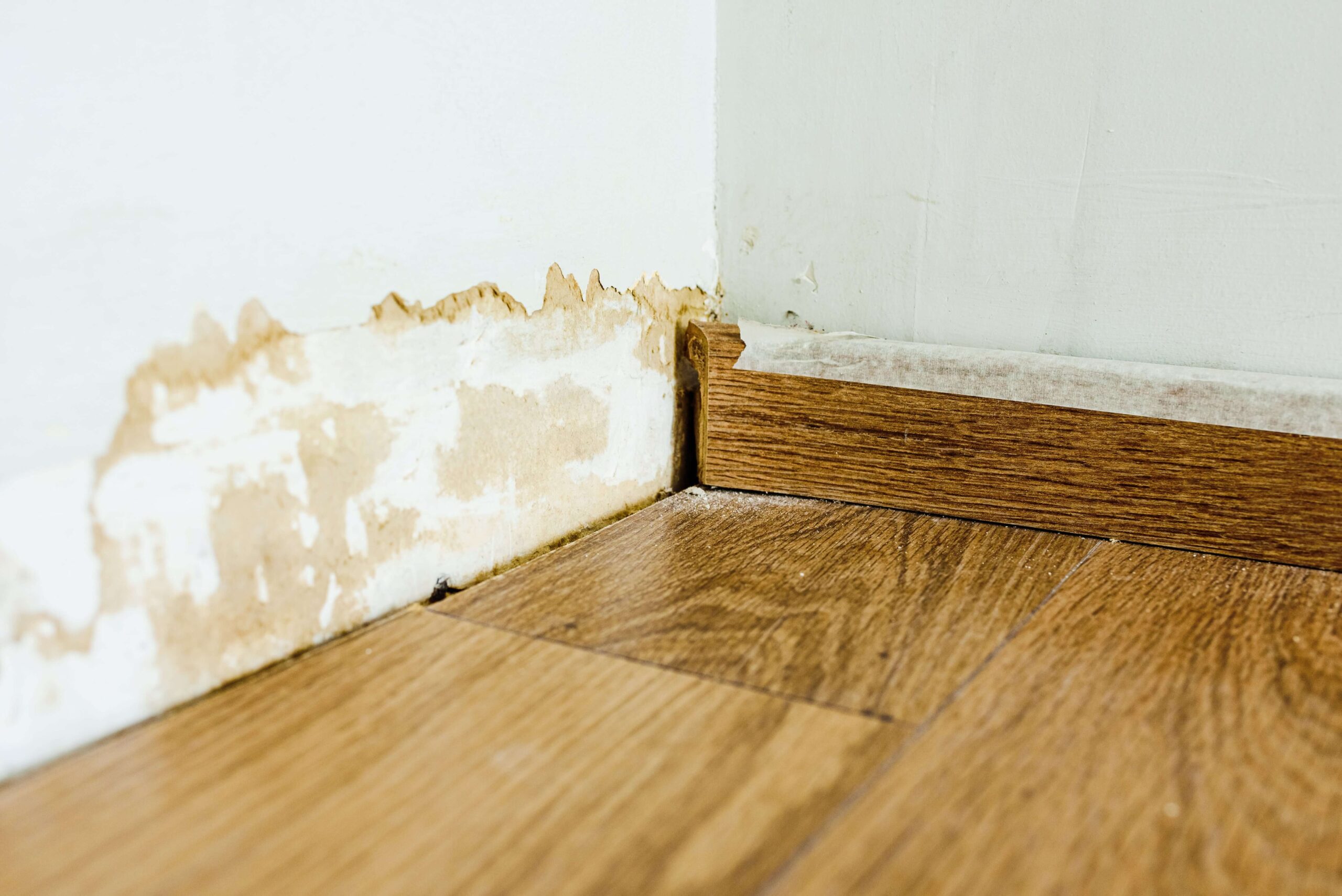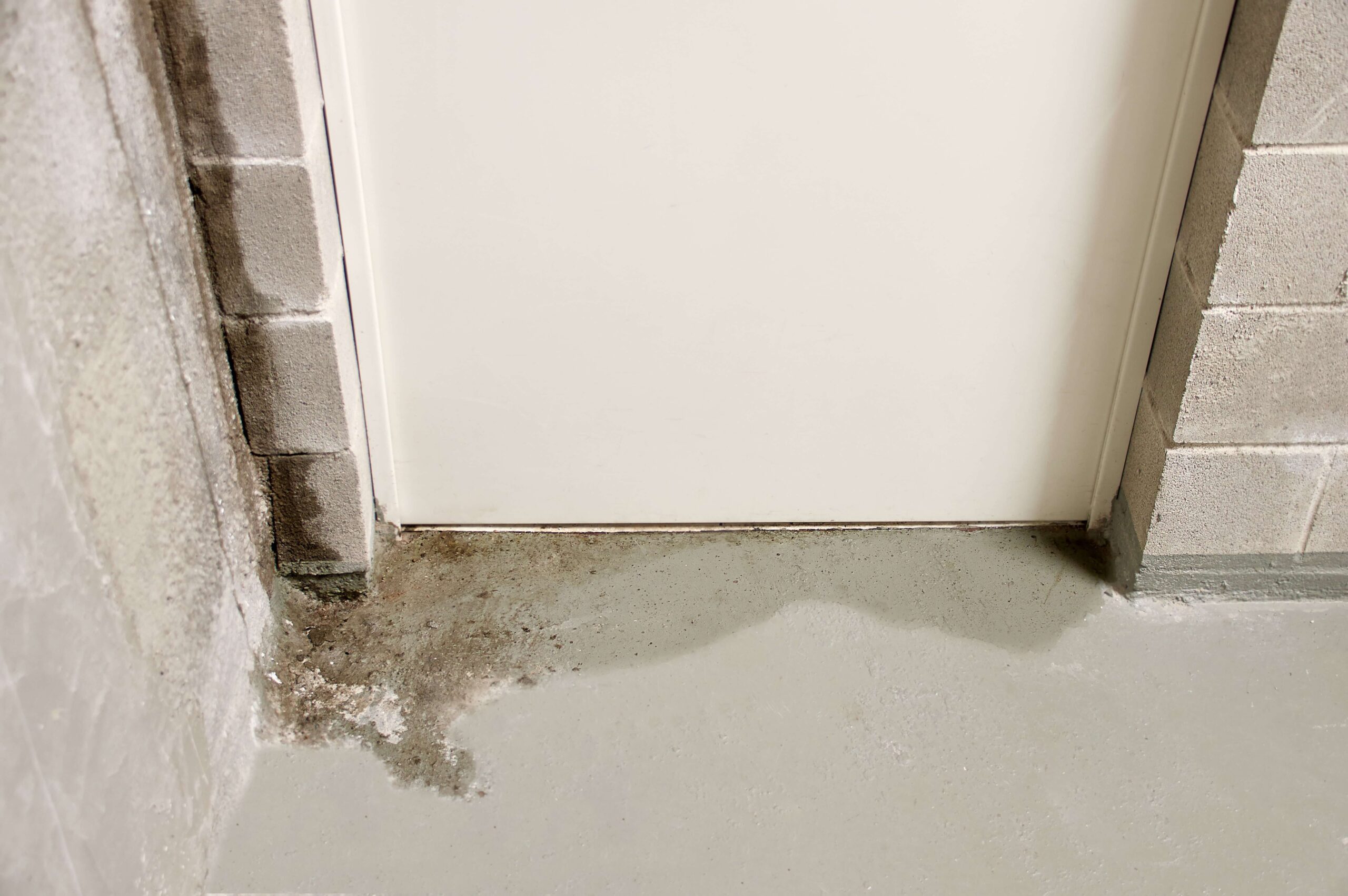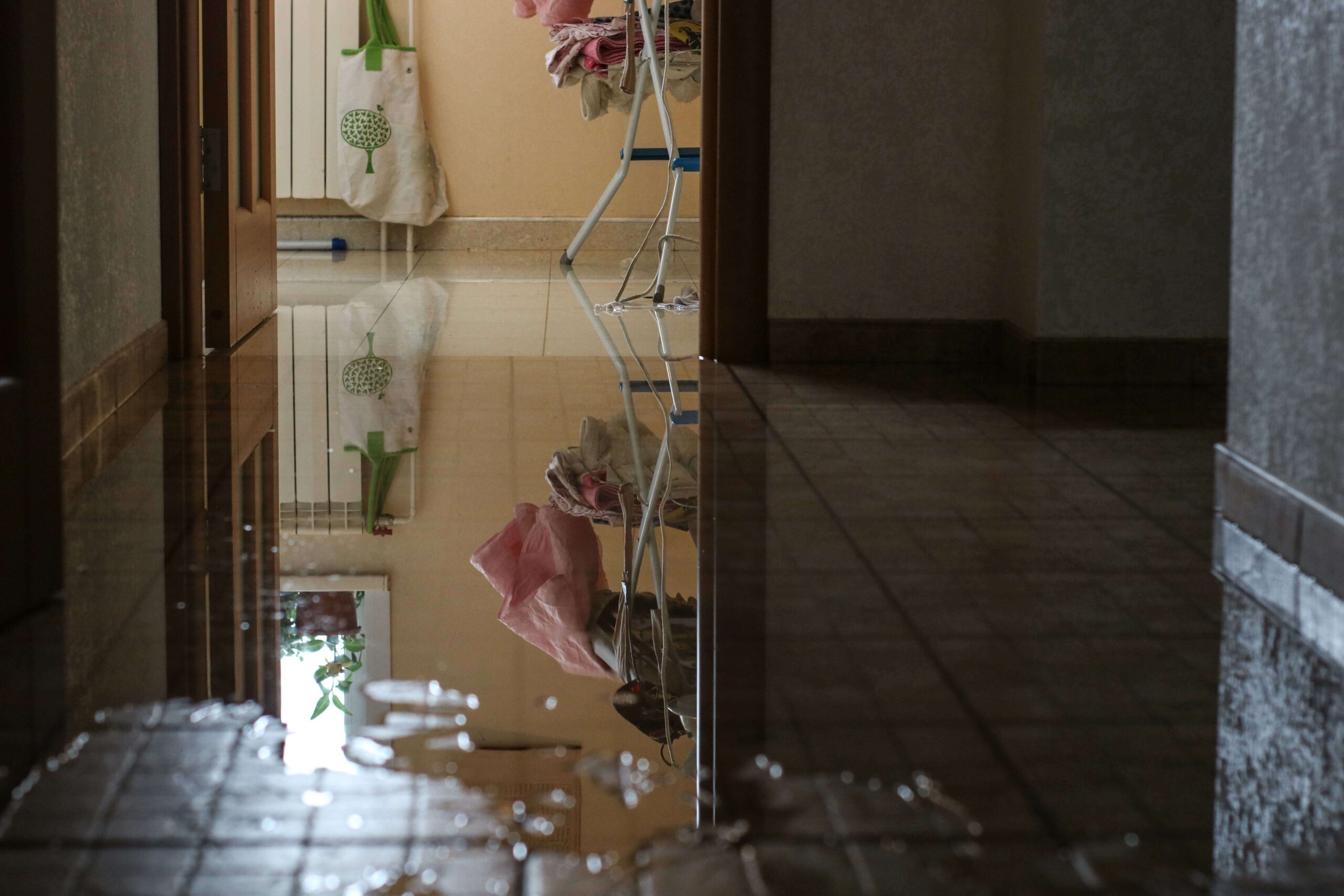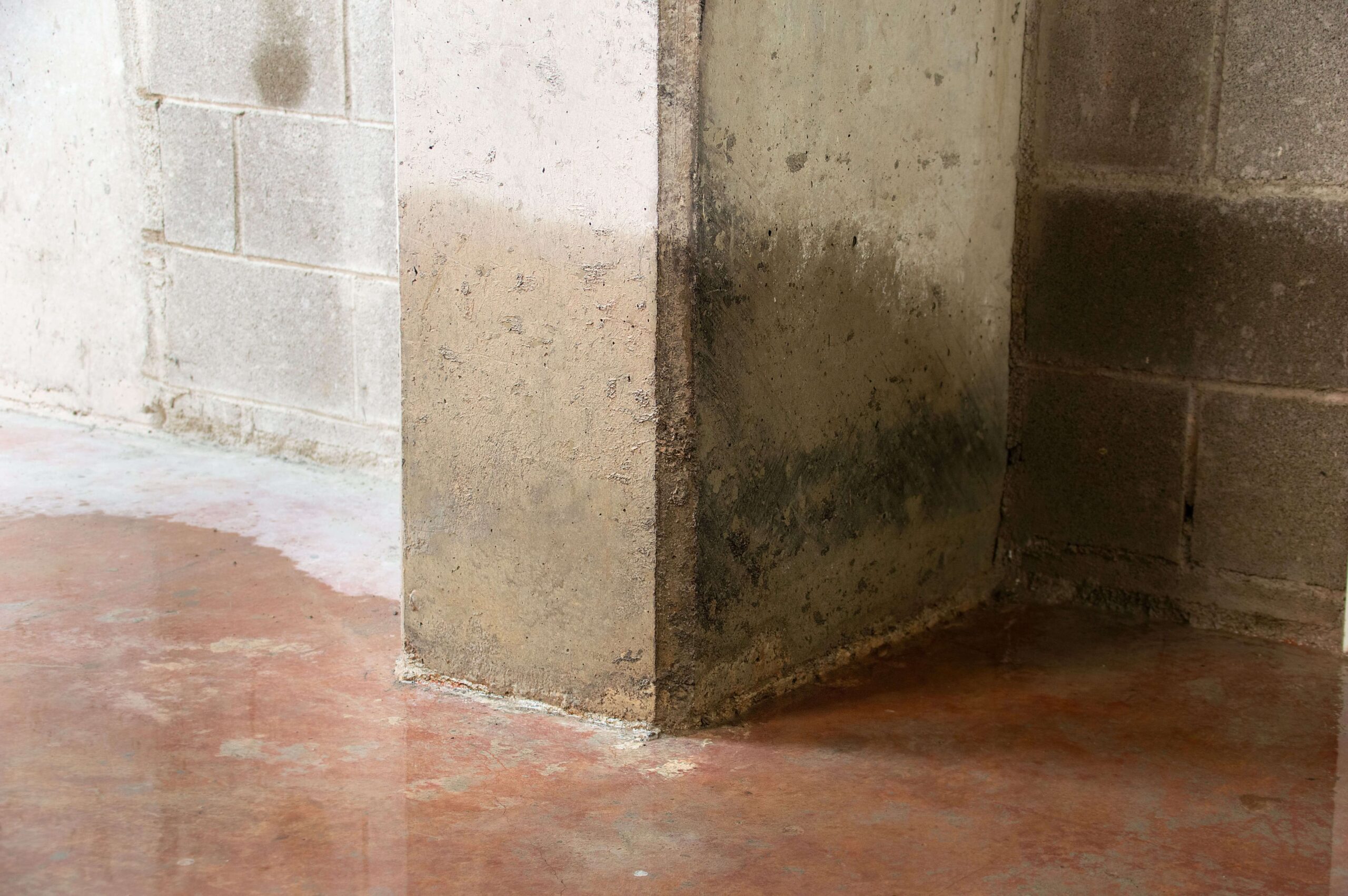DAMP FLOORS
 It’s no secret that damp rising through floor slabs is quite common, especially when a damp-proof membrane has been overlooked or inaccurately installed before laying the foundation. Yet even more so if and when moisture levels become too high, transferring water vapours to the upper layers of covering material. From here comes problems like carpets becoming drenched in watery spots and wooden floors warping due to excess humidity – no one wants their home looking anything less than perfect!
It’s no secret that damp rising through floor slabs is quite common, especially when a damp-proof membrane has been overlooked or inaccurately installed before laying the foundation. Yet even more so if and when moisture levels become too high, transferring water vapours to the upper layers of covering material. From here comes problems like carpets becoming drenched in watery spots and wooden floors warping due to excess humidity – no one wants their home looking anything less than perfect!
Damp Concrete Floors
Rising damp in concrete floors can be disastrous, leading to flooring destruction and costly repairs. Fortunately, steps can be taken to protect these areas from incurring moisture damage. The two most successful methods involve either digging up the existing slab and replacing it with a new one fortified by an advanced damp-proof membrane or alternatively isolating any exposure with a specialized surface Damp Proof Membrane (DPM). Both options should not only safeguard against further water intrusion but save you money down the line!
Damp-proofing concrete floors above ground
Damp-proofing extensions
If you’re constructing a new build or extension home, it’s essential to make sure that damp-proofing measures are included in the initial construction stage. Nowadays, all newly built structures require damp-proof membranes to protect against rising damp and ensure optimal air quality within your property. These sturdy Polyethylene 1200 Gauge DPMs lie between the hardcore base and concrete slab, forming an impenetrable barrier.
Damp-proofing concrete basement floors
Unfortunately, basements are often susceptible to dampness, water pressure and flooding. To combat these issues, we must consider waterproofing solutions that boast a superior performance level. Not only do they have to resist heavy-flowing liquids, but also need to be compatible with other basement waterproofing components in the system – meaning it’s essential you get an expertly designed plan for your project.
How to deal with damp concrete floors
Not only walls but floors can also be prone to dealing with moisture penetration. In particular, concrete’s porosity makes it more vulnerable and even harder to remedy issues like dampness and mould growth. Water may travel through the minuscule capillaries on a concrete floor surface which often results in troubling outcomes such as wet spots or unsightly black patches of fungi.
Isolating and fixing damp-floor issues is a breeze, especially if they’re due to above-ground services such as leaking pipes. All you need to do is address the source of moisture and take measures to ensure that your floor dries out quickly. Simple!

Damp-proof membrane failure
Complicated issues often arise when moisture is allowed to rise up through solid concrete. Fortunately, modern buildings are built with powerful plastic damp-proof membranes as a preventative measure. These membranes should be applied upon sand blinding before the concrete foundation is poured and will effectively stop groundwater from seeping through the structure if installed properly.
Sadly, many older constructions lack damp-proof membranes, thus making them susceptible to damp floors. Even newer structures can experience this same issue if the installed membrane was not placed properly or has suffered some sort of damage.
Damp Floors Can Cause Damp In Walls
Structures that are older and built with solid concrete often lack a damp proofing process, meaning water can gain access to the floor quite easily. As time passes, more and more moisture accumulates on these floors, which then permeates through bricks in the walls, resulting in further destruction of the building’s foundations.
What Damp Proofing can be done?
To protect property from potential deterioration, damp proofing is an important precautionary measure. Damp can lead to rot which weakens furnishings and buildings, leading to more serious issues like wet or dry rot if left untreated. It’s essential that any existing damage to the damp-proof system be treated quickly, as it could result in damaging effects on the structure of a building otherwise. Therefore, identifying and addressing signs of damp should never be overlooked for optimal protection against further destruction!



frequently asked questions
Can damp floors occur in both residential and commercial buildings?
Yes, damp floors can occur in both residential and commercial buildings. Any building that has issues with moisture or water leaks can experience damp floors.
Are certain types of flooring more susceptible to dampness?
Yes, certain types of flooring like carpet, wood, or laminate are more susceptible to dampness as they can absorb moisture. In contrast, tile or concrete floors are less likely to be affected.
How does dampness on floors affect indoor air quality?
Dampness on floors can lead to the growth of mould and mildew, which release spores into the air. These can cause respiratory problems and allergic reactions, thus negatively affecting indoor air quality.
Can damp floors cause damage to floor coverings, such as carpets or wood?
Absolutely, dampness can cause significant damage to floor coverings. It can lead to rot in wooden floors, discolouration of carpets, and lifting or warping of laminate or vinyl flooring.
Can plumbing leaks or pipe condensation cause damp floors?
Yes, plumbing leaks or condensation from pipes can contribute to damp floors. Water from these sources can seep into the floor, causing dampness.
Can the use of damp-proof membranes or sealants help prevent damp floors?
Yes, using damp-proof membranes or sealants can provide a barrier against moisture, helping to prevent damp floors.
Can the condition of pipes or drains beneath the floor affect dampness?
Certainly, if pipes or drains beneath the floor are leaking or have condensation, this can contribute to dampness on the floor above.
Can the age or condition of the building's structure impact dampness on floors?
Yes, older buildings or those with structural issues may have more problems with dampness due to factors such as inadequate dampproofing or poor drainage.
Can damp floors be resolved without major renovations or floor replacements?
In some cases, yes. If the cause of the damp is identified and addressed – such as fixing a leak – and if the floor is dried out properly, major renovations or replacements may not be necessary.
Can the use of moisture-absorbing materials or desiccants help reduce dampness on floors?
Yes, using moisture-absorbing materials or desiccants can help to reduce surface dampness. However, they won’t solve underlying causes of dampness like leaks or condensation.
Can the use of vapour barriers or damp-proof membranes under flooring help prevent dampness?
Certainly, vapour barriers or damp-proof membranes can be very effective in preventing dampness. They provide a protective layer that stops moisture from rising up into the floor.
DAMP FLOOR SURVEY
To get help, call London Damp Surveys on 0207 305 5997.
Or, feel free to send an enquiry or book a survey online.
If you submit an enquiry form, one of our damp surveyors will be in touch with you to discuss your problems. We aim to contact you within 24 hours.
- }Damp can cause structural problems such as rot and corrosion that could ultimately cost you money in the long run if not treated properly.
